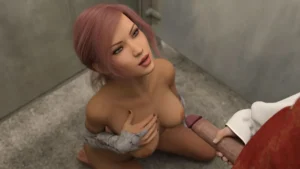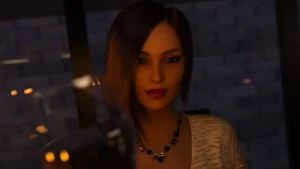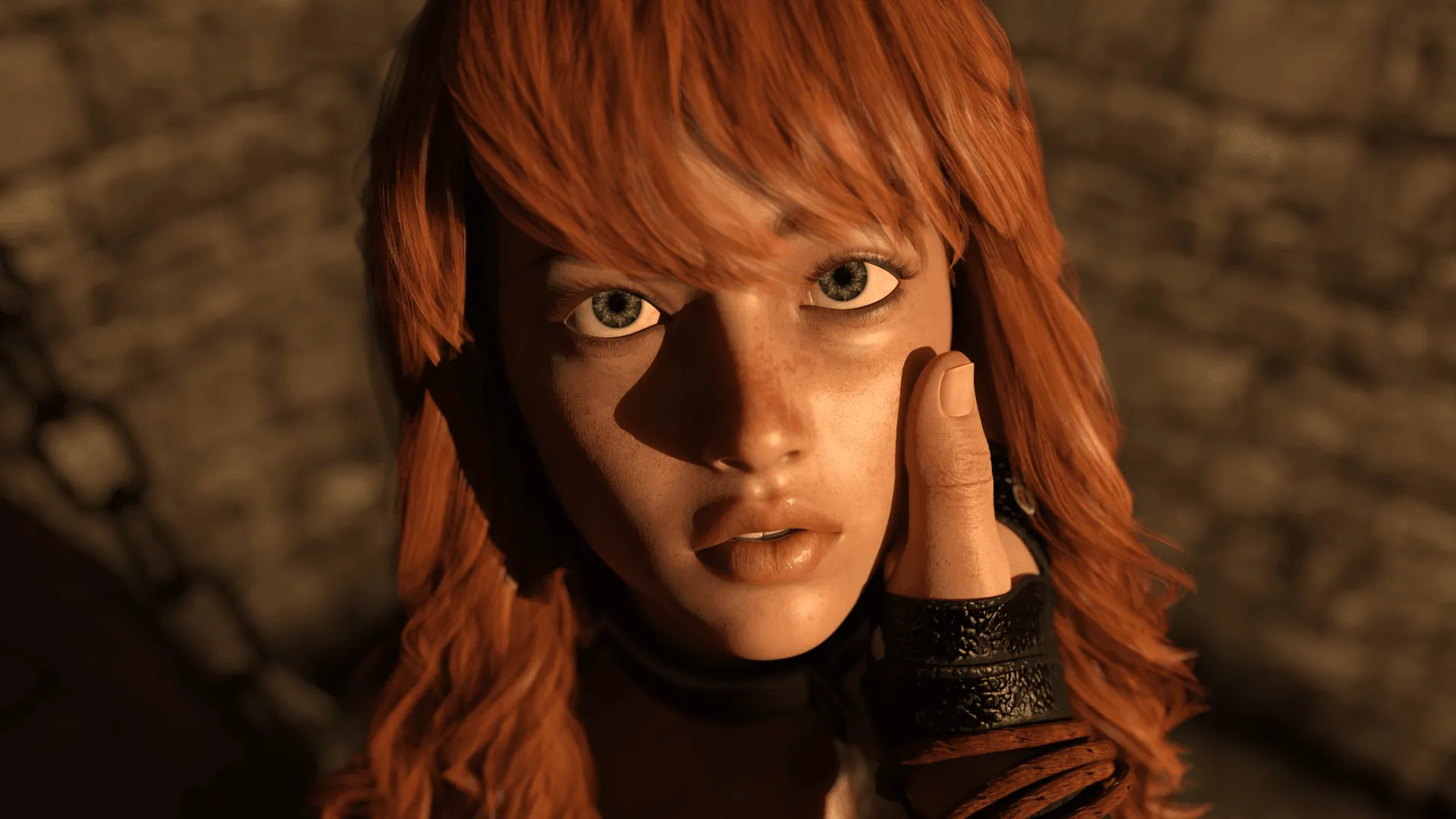
Play Returning to Mia
Returning to Mia review
Explore the story, gameplay, and unique features of Returning to Mia
Returning to Mia is a captivating visual novel game that continues the story of a young protagonist reunited with Mia after two years. This game, developed by Inceton Games, is known for its immersive storytelling, multiple endings, and rich character development. In this article, we will explore what makes Returning to Mia a memorable experience, from its narrative depth to gameplay elements, helping both new and returning players understand why this game has gained a dedicated following.
What Is Returning to Mia? An Overview of the Game
So you’ve played your fair share of visual novels, right? You know the drill: click, read, make an occasional choice, and see where the story takes you. I’ve been there too, sometimes feeling like my decisions didn’t carry enough weight. But then I stumbled upon the Returning to Mia game, and it reminded me why I fell in love with this genre in the first place. It’s a sequel that doesn’t just continue a story—it deepens it, making you an active participant in a beautifully crafted, emotional journey. If you’re curious about what makes this title stand out in a sea of narrative adventures, you’ve come to the right place. Let’s pull back the curtain. 🎭
Developed by Inceton Games, this title is a direct sequel, picking up two years after the events of the first game. It’s that rare follow-up that manages to feel both familiar and entirely new, a testament to the developers’ understanding of their own creation. For anyone invested in the characters, jumping back into this world is like reuniting with old friends, only to discover they’ve been on their own transformative journeys while you were away.
The Storyline and Setting
Where do you begin again with someone who meant everything to you? This is the central, heart-tugging question at the core of the Returning to Mia storyline. The game places you back in the shoes of the protagonist, who, after two years of separation, gets a chance to reconnect with Mia. This isn’t a simple “hey, how have you been?” catch-up. It’s a nuanced exploration of time, change, and the fragile hope of rekindling a connection you thought was lost. 🕰️💖
I remember starting my playthrough, genuinely wondering if the spark would still be there. The game masterfully builds on the history between the characters. You aren’t just told they had a past; you feel its weight in every hesitant glance and carefully chosen word. The setting often revolves around intimate, familiar locations, which makes the emotional moments hit even harder. Your home, a quiet café, a park you both used to visit—these places become stages for a deeply personal drama.
The narrative doesn’t spoon-feed you emotions. Instead, it presents situations and dialogue that feel authentic, allowing you to project your own feelings onto the protagonist. Are you hopeful? Cautious? A little bit hurt? The Returning to Mia storyline gives you the space to define that relationship for yourself, making the eventual outcomes feel truly earned. This is a story about second chances, and whether they are a blessing or a complication is largely up to you.
Core Gameplay Mechanics
At its heart, the Returning to Mia game employs classic visual novel gameplay mechanics, but it executes them with a sharp focus on consequence. If you’ve ever played a choose-your-own-adventure book, you’ll feel right at home, but with far more emotional depth. The primary loop involves reading through beautifully rendered scenes and making choices at critical junctures.
The magic of this visual novel gameplay lies in its subtlety. You won’t often be faced with glaringly obvious “good” or “bad” choices. Instead, you’re choosing between tones, attitudes, and levels of vulnerability. Do you open up about your feelings, or do you keep things light and playful? Do you bring up the past, or focus on the present? I found myself pausing at these decisions, genuinely weighing how I wanted this reunion to unfold. It’s this engagement that transforms the experience from passive reading to active storytelling. 🤔✨
The crown jewel of this system is the multiple endings visual novel format. Your journey with Mia can conclude in several dramatically different ways. This isn’t just about getting a “good” or “bad” ending; it’s about seeing the natural conclusion of the path you’ve walked. On my first playthrough, I was so sure I was making all the “right” choices, only to be met with an ending that was bittersweet and realistic. It was a powerful reminder that in matters of the heart, there is no perfect script.
This structure provides incredible replay value. Once you’ve seen one conclusion, you’ll be driven to go back and explore how different your choices could have been. It makes the Returning to Mia game not just a story you experience, but a world of possibilities you can explore.
| Gameplay Feature | Description | Impact on Experience |
|---|---|---|
| Branching Dialogue Choices | Player selections during conversations that influence character relationships and story direction. | Creates a deeply personalized narrative journey and fosters a strong connection to the characters. |
| Multiple Endings System | A narrative structure where player decisions lead to several unique and meaningful conclusions. | Greatly enhances replayability and emphasizes the weight of in-game choices. |
| Relationship Meter | A hidden (or sometimes visible) system that tracks the protagonist’s standing with Mia. | Provides subtle feedback on player choices, making interactions feel consequential. |
| Save & Load Functionality | Allows players to create multiple save files at key decision points. | Encourages experimentation with different dialogue paths and outcomes without penalty. |
Pro Tip: Don’t be afraid to save scum! Create a new save file before every major decision. This lets you experience the fascinating cause-and-effect of the multiple endings visual novel format without having to replay the entire game from the start each time.
Visual and Audio Design
Let’s talk about the atmosphere. A visual novel lives and dies by its ability to immerse you, and the Returning to Mia game excels through a stunning combination of sight and sound. The developers at Inceton Games have clearly poured a lot of love into this final episode, especially when it comes to the game animations Returning to Mia players get to enjoy.
The number of new images and specifically crafted animations is significant. We’re not just talking about static character sprites with changing expressions. The game animations Returning to Mia features include subtle movements like a character brushing hair from their face, looking down thoughtfully, or the gentle sway of scenery. These small details breathe life into the scenes, making the world feel dynamic and responsive. On a personal note, seeing a specific, subtle animation during a key emotional confession made the moment infinitely more powerful than if it had been a still image. 🎨💫
But a world is only half-alive without its soundscape. This is where the Returning to Mia sound design truly shines. The team didn’t just reuse assets; they updated and introduced new sound effects and music tracks that perfectly complement the story’s tone. The soundtrack knows exactly when to swell with emotion and when to retreat into a melancholic silence, letting the weight of a conversation hang in the air.
The Returning to Mia sound design is meticulous. From the ambient noise of a rainy day outside the window to the crisp sound of a coffee cup being set down on a table, every auditory element is designed to pull you deeper into the scene. It’s the kind of detail you might not consciously notice, but you’d absolutely feel its absence. It wraps the entire experience in a cohesive, emotional blanket that makes the journey with Mia feel tangible and real. 🎧
In conclusion, the Returning to Mia game is a masterclass in sequel storytelling and refined visual novel gameplay. It understands that a powerful narrative is built on meaningful choices, expressed through a compelling Returning to Mia storyline and enhanced by top-tier presentation. The beautiful game animations Returning to Mia employs, combined with the immersive Returning to Mia sound design, create an unforgettable atmosphere. It’s a journey that respects your intelligence and rewards your emotional investment, proving once again why the multiple endings visual novel model is so compelling when done right.
Returning to Mia offers a rich visual novel experience with a compelling story, engaging gameplay, and impressive visual and audio enhancements. Whether you are a returning player or new to the series, the game’s multiple endings and character-driven narrative provide a unique and immersive journey. Dive into Returning to Mia to explore its captivating world and discover the choices that shape your story.





















